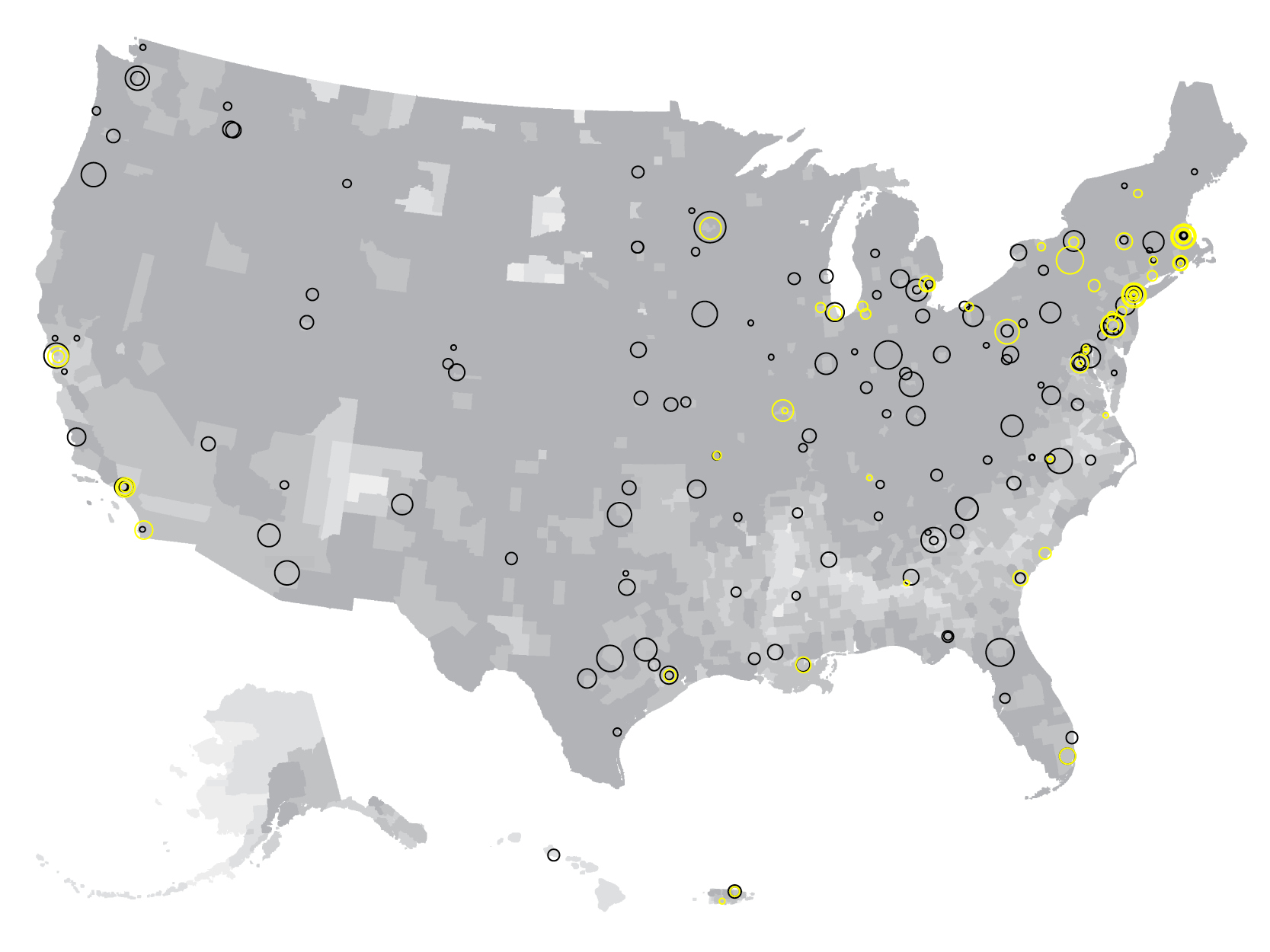Infrastructure in
America
Professional Programs in the Built Environment, 2021
Numbering well over a thousand, in nearly every state and territory, and ranging from short, focused certificates in stand-alone institutions to accredited master’s degrees in sprawling research universities, professional academic programs of the built environment in the United States are heterogeneous to the point of being nearly unrecognizable as a set. Like the spaces they inform, it is difficult to reduce these programs to particular, shared characteristics—that is, with the exception of their professional orientation. Where we learn surely has direct bearing on how we learn, so what might we make of these differences positively in a time of increasingly globalized, yet unevenly experienced, challenges? Since Green Reconstruction will require the engagement of professionals of all kinds, how might we leverage this scalar, geographic, disciplinary, and institutional diversity as an asset rather than let it dissipate our collective professional force so completely that it loses its power?
From the summer of 2020 through the summer of 2021, teams of graduate research assistants and adjunct associate research scholars at the Buell Center compiled, organized, and analyzed information on 1,115 academic programs at professional schools of the built environment across the United States. Together, these researchers reviewed 218 higher education institutions that grant accredited and non-accredited degrees and certificates within the disciplines of architecture, landscape, planning, interior design, preservation, and building and construction management.
The complete database is represented in the below map and corresponding table, and is discussed in more detail in the publication Green Reconstruction: A Curricular Toolkit for the Built Environment. Information may be sorted according to categories such as degree name; accreditation status; location; whether an institution is public or private, a Historically Black College or University, or STEM Certified; and others. The database is fully searchable.
Special thanks to Abby Rinaldi for their work organizing and visualizing this resource.

This map indicates the locations and concentrations of the programs included in the database, with special attention given to the proportion of the White population in each location. For more information, see the publication "Green Reconstruction: A Curricular Toolkit for the Built Environment." Design by MTWTF